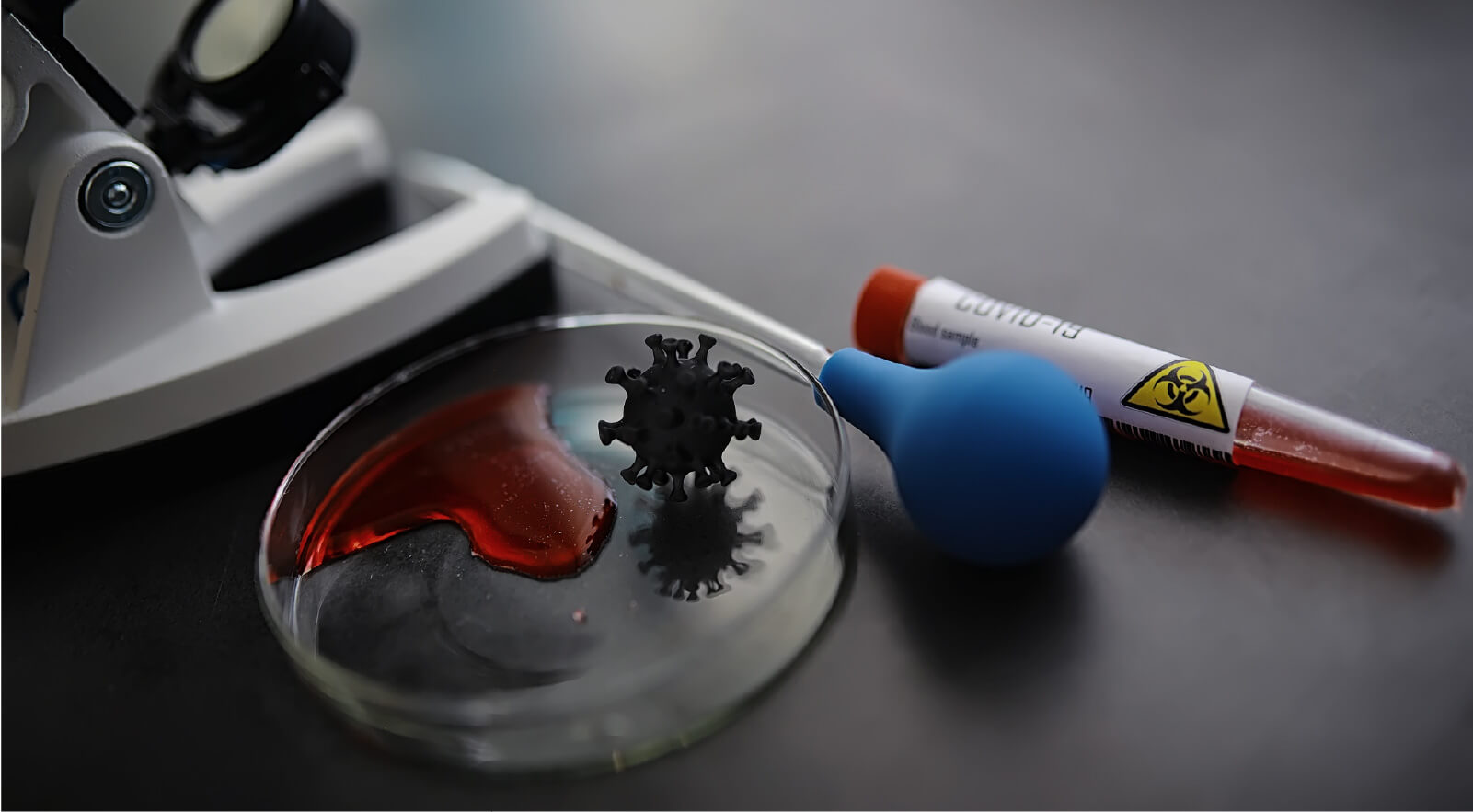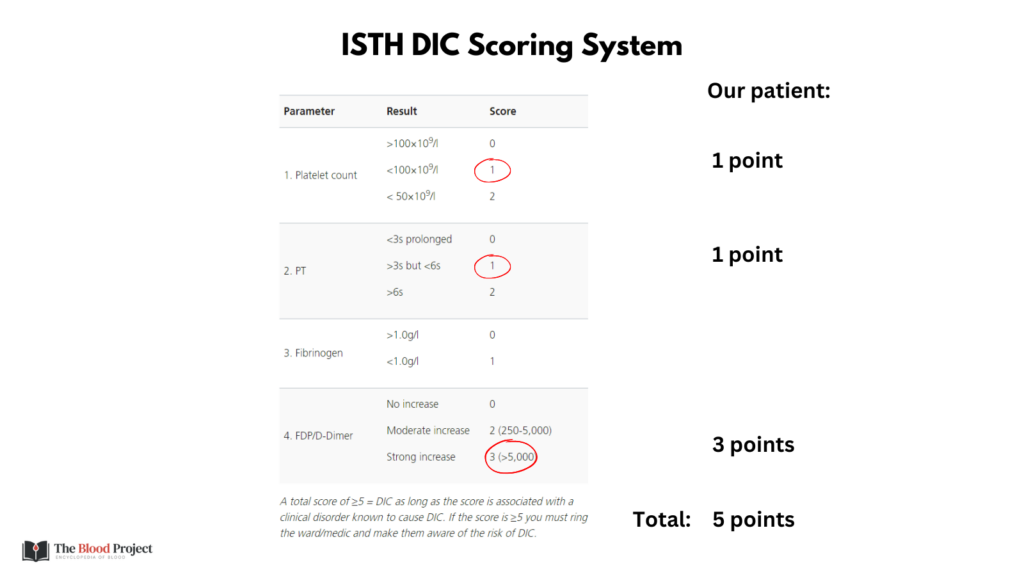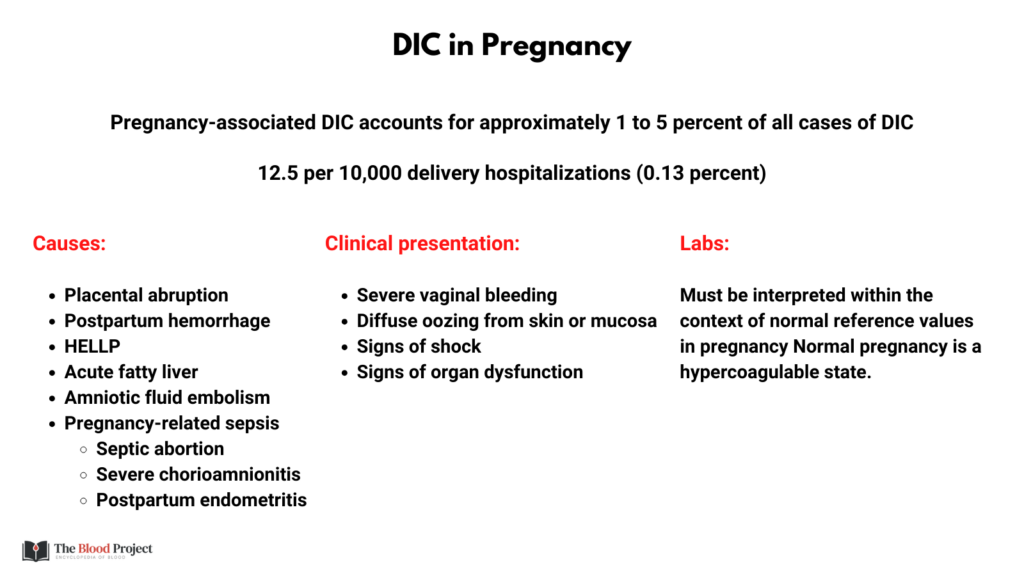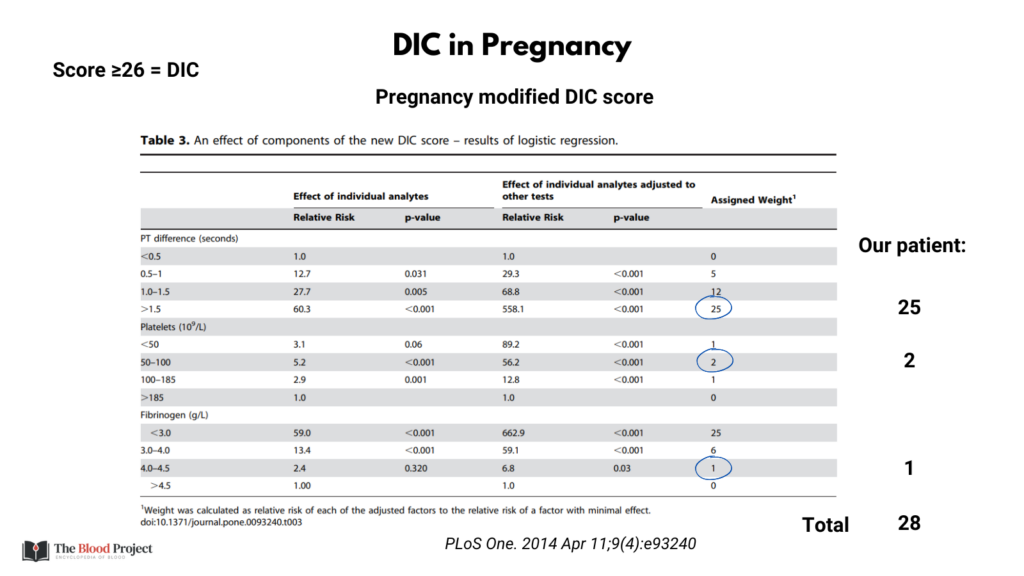
Answer to Case on Thrombocytopenia and Coagulopathy

The above labs show:
- Anemia
- Thrombocytopenia
- Elevated PT
- Elevated D-dimers
Question: Could be DIC and if so, what are the circumstances?
Answer: No single lab test is sufficiently sensitive/specific to diagnose DIC. Diagnosis is facilitated by use of clinical prediction scores, most commonly the ISTH score.

In this case, the ISTH score is:
- PLT 55 – 1 point
- Elevated D-dimer – 3 points
- Elevated PT – 1 point
- Low Fbn – 0 points
- Total: 5 points
5 points is compatible with overt DIC. What is unusual about this patient’s labs is that the fibrinogen is so high.
Question: What might explain the high fibrinogen in the setting of DIC?
Answer:
- Pregnancy – fibrinogen levels increase during pregnancy and are often “normal” in the setting of DIC.
- COVID-19-associated coagulopathy – characterized by increased D-dimer, increased fibrinogen levels, and mild prolongation of the PT.
- Administration of cryoprecipitate or fibrinogen concentrate to a patient with DIC.
Case summary:
This was a 33 yo F who presented with septic abortion during the second trimester. She had gram negative bacteremia (speciation is pending) and heavy vaginal bleeding. She underwent D&C and cervical balloon placement, was treated with antibiotics and received pRBC/FFP. Four days later, all her coagulation tests had normalized.

The ISTH DIC score does not perform as well in pregnant women vs. non-pregnant patients. One group adapted the ISTH DIC scoring system for diagnosis of overt DIC for use in pregnant patients (see graphic).

Take home message: of all the markers of DIC, fibrinogen is least sensitive, and this is even more so the case in a patient who is pregnant because their levels normally increase as pregnancy progresses.
